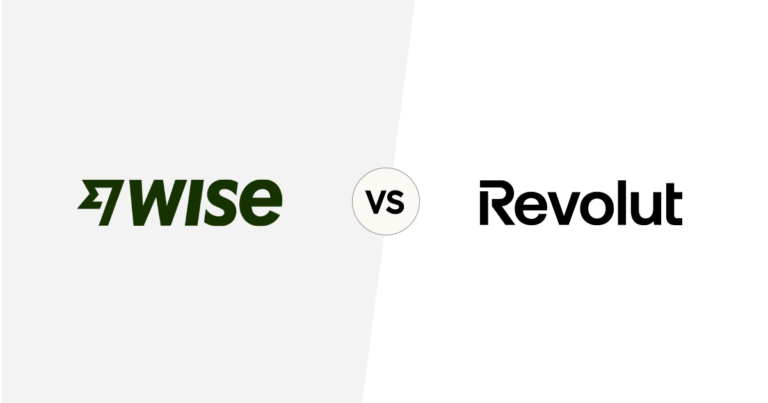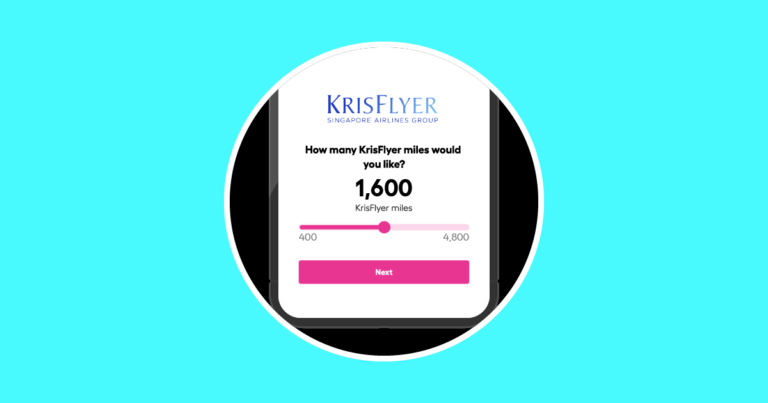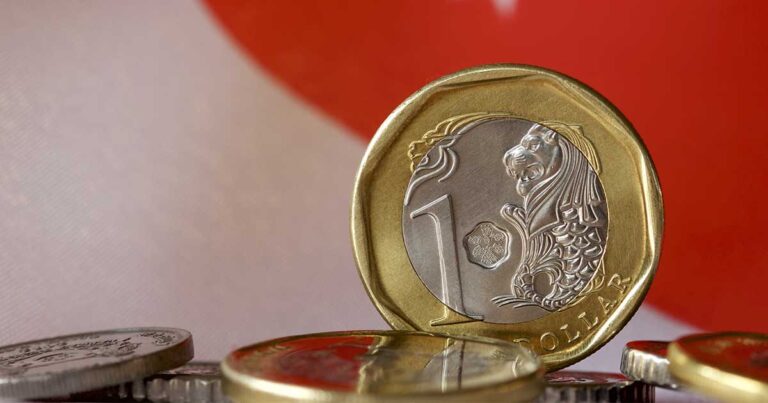All you need to know about interest rates

This article covers:
Interest rates and exchange rates are two of the most important economic indicators in any country. They can have a huge impact on the economy, and on the lives of ordinary people. In this blog post, we will explore what interest rates and exchange rates are, and we will discuss some of the factors that drive interest rate and exchange rate changes.
We will also take a look at how interest rates and exchange rates interact with each other, and we will offer some tips for managing your money in a changing interest rate environment.
What is ‘interest rate’ & how does it work?
The interest rate is what the lender charges you for borrowing their money. The amount from the interest rate is also what the lender gets in return when they lend you money.
This interest rate is usually charged every year, but it can also be charged every day, week, month or quarter depending on the agreement between you and the lender.
The interest rate is applied to the amount of money you borrow and it’s expressed as a percentage of that principal amount.
Example:
Borrowed amount: USD 1000
Interest rate: 5%
Amount of interest to be paid: USD 50
Total amount to be repaid: USD 1050
What is an ‘exchange rate’? How do exchange rates work?
Anyone who has ever travelled overseas knows that exchange rates can be confusing. To put it simply, an exchange rate is a rate at which one currency can be exchanged for another.
The exchange rate tells us how much the first currency costs in terms of the second currency.
Example: USD1 = INR 79.54
There are two categories of exchange rates:
- Fixed/pegged exchange rates: This means that the government sets a fixed number for the exchange rate and then maintains it.
- Floating exchange rates: determined by the market forces of supply and demand.
The value of a currency is determined by how much demand there is for it compared to the amount of it that is available. When there is more demand than there is supply, the value of the currency goes up. But when there is more supply than demand, the value of the currency goes down.
Of course, it’s never really that simple. Exchange rates are constantly shifting, and they can be affected by a variety of factors, from political stability to economic conditions.
You Might Also Want To Read: 9 Things You Must Know About Foreign Exchange Rates and International Remittance
Types of interest rates
Simple Interest
The most basic type of interest is called simple interest. This is the interest that is only charged on the original amount of the loan. The rate of this interest does not change over the time of the loan.
Tip: If you are a borrower, look for a loan with simple interest so you have to repay less money.
Compound interest
The percentage is applied to the most recent sum of money that includes both the principal and any interest that has already been earned.
Here’s an example of how it works:
5% compounded monthly over 3 month period
| Month | 1st month | 2nd month | 3rd month |
| Amount | USD 1000 | USD 1050 | USD 1102.5 |
| 5% compounded monthly | USD 50 | USD 52.5 | USD 55.13 |
| Total amount | USD 1050 | USD 1102.5 | USD 1157.63 |
This is how interest works over time. It happens again every year the loan lasts. Compound interest has a bigger effect on how much people owe and how much people earn. That’s why it’s called “the power of compounding.”
Compound interest rates are often used for things like savings accounts and credit cards.
Tip: If you’re an investor, find an investment instrument that earns you compound interest. This way, you will make more money over time.
If you’re looking for an instrument that earns more interest, look for one that compounds monthly. This means that the earned interest is calculated every month and added to the principal before calculating the next month’s interest. This will give you a higher return on your investment as compared to the annual compounds.
Amortised interest
An amortized loan is a loan where the borrower pays both interest and principal each month. The amount of interest you pay is based on how much you owe on your loan.
Any extra money that you pay each month reduces the amount of debt you owe, which then makes the interest calculation smaller.
Amortized loans are often used for mortgages, personal loans, and car loans.
Fixed rate interest
A fixed interest rate is set ahead of time and will stay the same for the agreed-upon life of the loan. This type of loan is helpful because you can see in advance how much you will need to pay back each month. The downside is that if the market takes a turn for the worse and you can’t afford your monthly payments, you don’t have any flexibility to reduce them.
Fixed interest rates are often used for home loans, student loans, car loans and personal loans.
When markets are doing well, this type of loan is low risk. But when the market isn’t doing well, it’s not as rewarding.
Variable/floating rate interest
A variable interest rate loan means that you can change how much you pay each month, depending on what the interest rate is. The interest rate could go up or down, and that will affect how much you pay.
You need to think about whether it’s worth the risk. If the rates go up, it might be harder to afford to pay back the loan. But if they go down, you might save money on your payments.
Variable interest rates are often used for mortgages and credit cards.
Prime rate interest
The prime interest rate is the interest rate that banks charge their most creditworthy customers. It is used as a benchmark to price other loans off of, like variable interest rates and adjustable rates.
The prime interest rate is affected by the federal funds rate, which is set by the Federal Reserve. When the federal funds rate goes up, the prime interest rate goes up.
The prime interest rate is used for things like credit cards, home equity lines of credit, and business loans.
Nominal interest rate
The price you pay to borrow someone’s money. This is the stated interest rate on a bond, deposit, or loan.
Principal= Euros 1,000
Nominal interest rate= 8%
Then he would expect his repayment burden to be:
Interest= Euros 80
Real interest rate
The real interest rate is the rate that a lender or investor actually receives after inflation is taken into account. Inflation reduces the lender’s purchasing power, so the nominal rate does not give a true representation of his returns.
Example:
A fixed deposit provides a 6% nominal yield.
The inflation rate is 4%.
Therefore, the real rate of interest after factoring in the loss due to inflation is only 2%.
Why do interest rates change? What factors are the drivers of this change?
There are a number of factors that can drive interest rates up or down:
The Central Bank
The central bank sets a baseline interest rate for loans to banks. This affects the interest rates that banks charge to individuals and businesses.
Examples of central banks are:
- US Federal Reserve
- People’s Bank of China
- Central Bank of India
- Monetary Authority of Singapore
- Bank Negara Malaysia
When the central bank raises interest rates, it becomes more expensive to borrow money. This makes people and businesses less likely to borrow and can cause businesses to raise prices. This makes people buy less, which can lead to unemployment and a slowdown in the economy. But at the same time, when interest rates are high, people are more likely to save their money.
Inflation
The country’s inflation rate also affects its interest rates.
When the economy is weak, the central bank keeps interest rates low to encourage banks to lend and people and companies to borrow. This boosts demand and economic growth. When the economy gets stronger, inflation rises, so prices go up. To keep inflation under control (some inflation is considered healthy) and prevent the economy from getting too strong, the central bank raises interest rates.
Money supply & demand
The interest rate is how much it costs to borrow money. When the interest rates are high, it means that borrowing is more expensive and people want to borrow less money.
If the economy is growing slowly, the central bank will try to increase growth by making borrowing cheaper. It will do this by lowering interest rates, which makes it easier for people to borrow money. This will then increase the demand for credit.
But if the economy is growing too quickly, there’s a risk of inflation. So to stop this from happening, the central bank will decrease the amount of money in circulation by raising interest rates.
Unemployment Rates
Interest rates and unemployment are related.
When unemployment is low, it usually means that the economy is doing well. This makes companies want to raise prices, which can cause inflation. To control inflation, the central bank raises interest rates. This makes people borrow and spend less money, which can lead to a slowdown in economic growth.
When economic growth slows down, companies may have to fire people or outsource jobs to save money. So when interest rates go up, it can lead to increased unemployment.
Government spending
The level of government debt or spending can also affect interest rates. When the government spends too much money, it can make it harder for other people (like consumers and businesses) to borrow money.
This makes borrowing more expensive and raises interest rates.
In order to service its debts, the government prints money instead of borrowing more from a central bank or a foreign ally.
This can increase the amount of money in the system, which reduces interest rates. But this also makes each unit of currency less valuable, which increases inflation.
Financial system
Different countries have different rules about money. These rules can make it easier or harder for people to borrow money.
Regulations that stop money from moving in and out of a country can also change how much interest rates are.
If a lot of money is coming into the country, the interest rates might be high. This will make more people want to invest in that country, which could help the economy grow.
When interest rates are high, more people save their money in banks because they can earn more interest. However, this means that there is less money available to invest in the stock market. This could lead to a slowdown in the economy.
The opposite happens when interest rates are low: less money is saved, and more people invest in stocks because they offer a better return. This leads to a stronger economy with more businesses doing well.
7. Exchange Rates
A country’s exchange rate is also an important driver of its domestic interest rates (and vice versa). This factor is covered in detail in the next section…
Before you go
When it comes to overseas money transfers, exchange rate volatility is not the only loss-inducing factor. Such transactions can involve hidden costs and telegraphic transfer (TT) fees which can increase the burden on the sender.
That’s why you should consider using Instarem to facilitate low fees, competitive FX rates and fast money transfers.
Instarem helps you send money abroad to over 50 countries. If you’re looking for an easy and affordable way to send money to your family or friends or even for business transactions, Instarem is the perfect solution.
With our simple platform, you can make a transfer in just a few clicks. Plus, we offer competitive rates and low fees so you can get the most out of your money.
Download the app, sign up on the web, or create a business account and see how easy it is to send money with Instarem.
 Get the app
Get the app


























